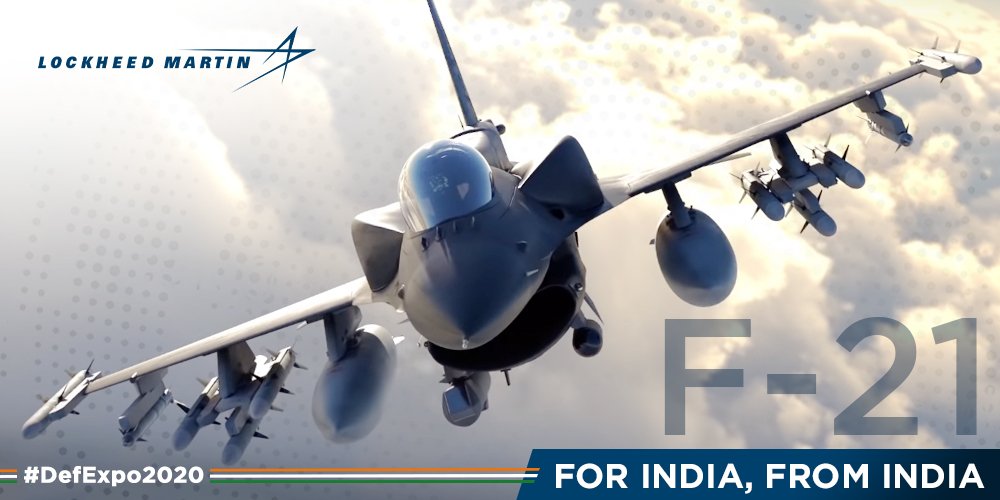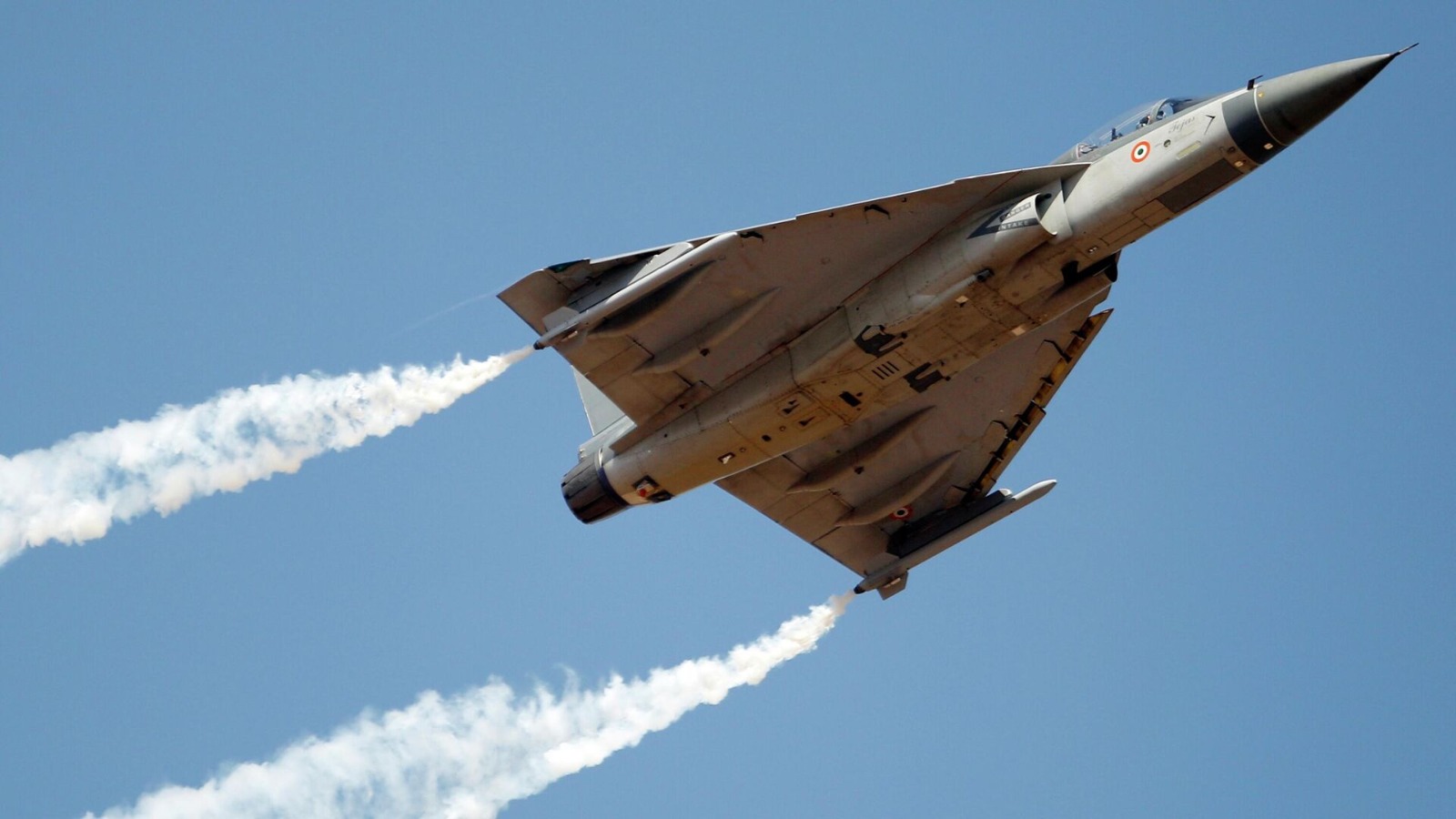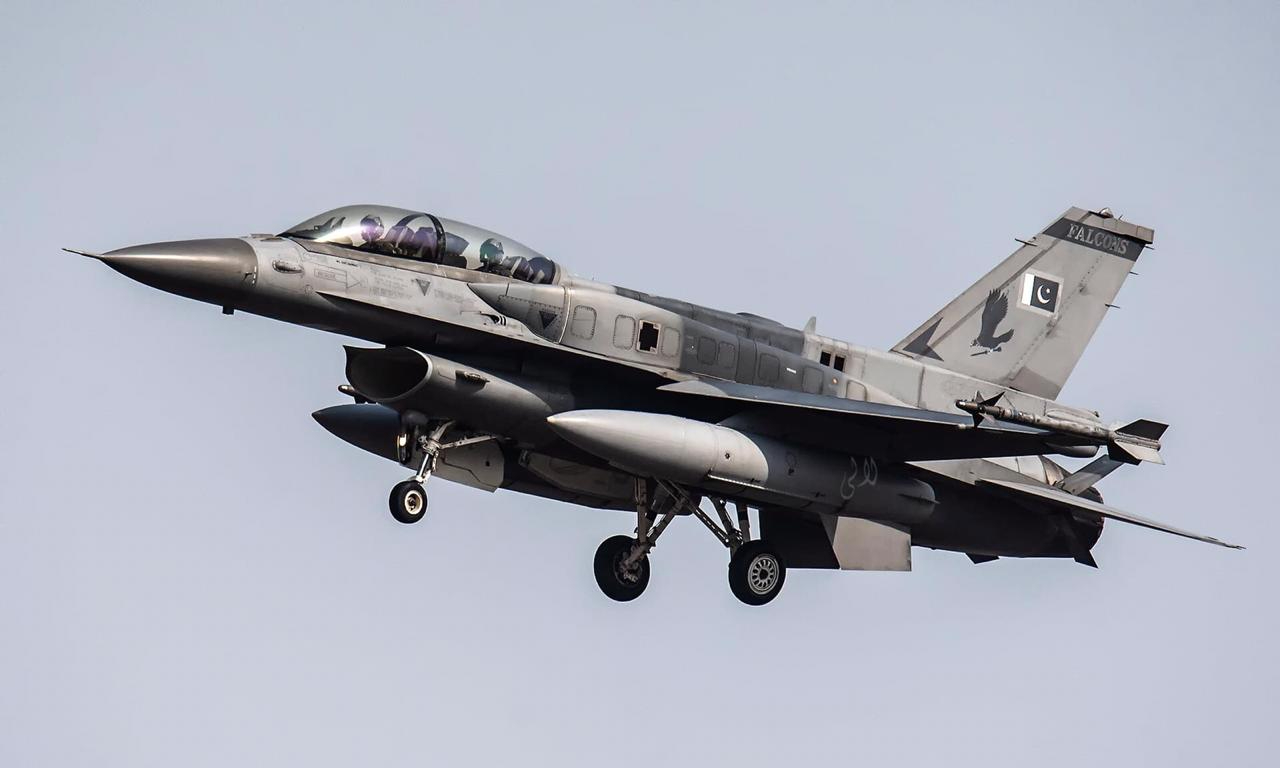In 2017, the Indian Air Force told the Narendra Modi-led Government that the indigenous Light Combat Aircraft ‘Tejas’ was far behind its competitors, such as the Swedish Saab’s JAS 39 Gripen and the US-made Lockheed Martin’s F-16.
Why Did Netizens ‘Mock’ Nigeria For Importing JF-17 Thunder Fighter Aircraft From China & Pakistan?
However, in 2024, LCA Tejas Mk1A, the advanced variant of the already inducted LCA Mk1, took to the skies, and the IAF placed one of the biggest defense orders for 83+97 of these fighter jets.
IAF, the fourth largest air force in the world, will soon operate around 350 LCAs (Mk-1, Mk-1A and Mk-2 variants). The force has already inducted 32 Mk1 (it has placed an order for 40 Mk-1 jets) and has placed an order for 83+97 of the Mk1A version.
In the coming decade, the IAF, grappling with a shortage of fighter jets, will have the homegrown LCA as the cornerstone of its combat power.
The EurAsian Times will compare the features of the LCA Mk1A with the F-16 to see where India’s 4.5-generation fighter stands. The LCA Tejas is Indian-made and developed by HAL (Hindustan Aeronautics Limited). It has produced 33 units so far. The F-16 Fighting Falcon has produced 4,604 units since its inception in 1978.
A retired IAF official, requesting anonymity, said, “The two aircraft are very different in terms of weight class, weapon carriage, pylons, performance, and their radar system. There are very few similarities.”
The LCA Tejas has a smaller fuselage, with dimensions of 43.3 feet in length, 26.9 feet in width, and 14.4 feet in height. The F-16 is larger, measuring 49.2 feet in length, 32.8 feet in width, and 15.7 feet in height. The LCA Tejas has an empty weight of 14,440 lb and a maximum take-off weight (MTOW) of 29,762 lb. The F-16’s empty weight is 18,960 lb, and its MTOW is 42,329 lb.
The LCA Tejas reaches a maximum speed of 1,975 kph (1,227 mph), while the F-16 surpasses it at 2,120 kph (1,317 mph). The LCA Tejas has a range of 3,200 km (1,988 miles), whereas the F-16 can cover 4,220 km (2,622 miles). The LCA has a maximum operational altitude of 16,500 meters (54,134 feet), whereas the F-16 has a service ceiling of 15,240 meters (50,000 feet).
‘Tejas’ or Brilliance is the culmination of India’s efforts to have its fighter jet. The single-engine aircraft Tejas came into existence 37 years after the F-16 Fighting Falcons.
For years, the US has been trying to make India choose its F-16 fighter jets first for its Medium Multi-Role Combat Aircraft deal and then the Multi-Role Fighter Aircraft contract for the IAF. Both deals require the acquisition of over 100 fighter jets.
India’s qualms about F-16s, the same aircraft that its bête noir Pakistan, made Lockheed Martin rebrand the aircraft as F-21, packed with greater punch and advanced electronics.
The F-21 is known as one step behind the F-22 Raptors. It is a single-seat fighter packed with missiles and modern sensors and can engage in both air-to-air and air-to-ground combat.
The US firm says specifically configured for the IAF, the F-21 provides unmatched ‘Make in India’ opportunities and strengthens India’s path to an advanced airpower future. The F-21 addresses the IAF’s unique requirements and integrates India into the world’s largest fighter aircraft ecosystem with the world’s pre-eminent defense company. “Lockheed Martin and Tata would produce the F-21 in India, for India,” the company’s sales pitch reads.

In the past, the IAF had expressed reservations about the LCA Mk1’s poor combat endurance of 59 minutes compared to the four hours of the F-16. It has also contended that Tejas can carry a payload of about three tons compared to nearly seven tons by the F-16.
“In other words, for a target that needs about 36 bombs to be destroyed, one will have to deploy six Tejas as against just three Gripen or F-16,” the IAF had told the government.
The LCA Tejas Mk1A also falls short when it comes to the combat-proven legacy aircraft F-16.
“Despite its shortcomings, LCA Mk1A has almost similar maneuverability. LCA Mk1A can pull 8g, and F-16 can pull 9g. But the F-16 is a versatile aircraft; it can take all American weapons. We are still struggling to integrate Israeli missiles into LCA,” the official added.
Pakistan Air Force purchased the F-16 from the US in 1981 and ordered 40 fighters. However, in the 1990s, the US embargoed an order for 28 F-16 jets due to concerns about Pakistan’s nuclear weapons program. The US resumed sales of the F-16 in 2005 instead of Pakistan’s assistance in the fight against al Qaeda.
The F-16 has an operational data link (ODL) called Link 16, which enables communication between various platforms, including fighter aircraft like the F-16, missile defense networks, and weapons systems. It significantly enhances the pilot’s situational awareness by providing real-time data exchange and coordination during missions.
ODLs facilitate secure and jam-resistance voice and data exchanges between connected assets. Within that framework, ODL enables networked parties to view each other’s sensor feed in near real-time. The feed could be from radars, sonars, and electro-optical (EO) systems such as cameras and others.
The PAF has developed an upgraded Link17 ODL. After the Balakot strikes, as reported by the EurAsian Times earlier, the IAF intended to data link all its airborne platforms, including the fighters, helicopters, command and control aircraft, as well as the transporters.
RAFAEL of Israel’s BNET-AR SDR will be installed. This capability was not present in the LCA Mk1A with tail number LA-5033 that took flight. The previous LCA Mk1 has yet to receive it.
“Without ODL, BVR missiles are of no use,” the official added.
Building Upon ‘Tejas’
The LCA Tejas Mk1A is a single-engine, multi-role fighter aircraft designed for air superiority, ground attack, and reconnaissance missions. The four big feature changes that LCA Mk1A has are the AESA radar, air-to-air refueling, advanced electronics suit, and an advanced Beyond Visual Range missile.

The Mk1A variant incorporates modern avionics, including an active electronically scanned array (AESA) radar, an improved electronic warfare suite, and advanced sensors. AESA radar systems can scan and track targets almost instantaneously because they can generate multiple beams simultaneously.
This allows for improved situational awareness and faster response times in detecting and tracking multiple targets, reducing the likelihood of targets being missed or lost during high-speed or maneuvering scenarios.
The payload capacity has been enhanced, and Mk1A can carry a variety of air-to-air and air-to-ground munitions, including missiles, bombs, and rockets. Certain design changes have been made, and the aircraft has improved its maneuverability. The LCA Tejas Mk1A features enhanced agility and better control surfaces for dogfighting and close combat.
In whether the LCA Mk1A would be able to carry out Balakot-type airstrikes, former IAF chief Air Chief Marshal RKS Bhadauria (retired) had said: “In terms of strike capability, it will have the capability of a standoff weapon which will be even beyond the capability we used that time.”
So the LCA Mk1A, with its advanced electronics suit, will detect the enemy warplane (like the JF-17) first and fire the indigenous BVR missile Astra to shoot it down.
The Indian fighter jet can carry air-to-air missiles like Astra (India’s first indigenous BVR), Derby (a medium-range BVR), and Python missiles. For air-to-ground weapons, it can carry precision-guided bomb Paveway, unguided rockets, and other precision-guided munitions.
The LCA Tejas Mk 1 is powered by the GE F404 engine, which belongs to a family of after-burning turbofan engines with a static thrust of 10,500 to 19,000 pounds (47 to 85 kN).
To significantly enhance the platform’s performance, the IAF would have liked the LCA Tejas Mk 1A to be equipped with the more powerful GE F414 engine capable of producing a thrust of 22,000 pounds (98 kN).
However, it has not been possible as the GE F414 engine has a diameter larger than that of the GE F404 engine and is heavier. Replacing the GE F404 engine with the GE F414 would require a substantial redesign of the fuselage. Redesigning an aircraft’s fuselage is a complex and time-consuming exercise, and it would practically become a new platform.
The initial variant of LCA has less internal fuel storage and needs externally mounted drop tanks. That is why the air-to-air refueling mechanism in LCA Mk1A is a big asset. It has a combat radius of about 300 kilometers (186 miles) without external fuel tanks.
F-16 Fighting Falcon
The F-16 is an iconic single-engine, highly maneuverable, supersonic, multi-role tactical fighter aircraft. The highly agile F-16 was the first fighter jet built to pull 9-g maneuvers.

The aircraft featured a bubble canopy for better visibility, a side-mounted control stick, and a reclining seat to reduce g-force effects on the pilot. Its thrust-to-weight ratio is greater than one, providing better power for climb and vertical acceleration.
Over the years, the F-16 has undergone several upgrades and variants, incorporating advanced technologies and improved capabilities.
F-16 was designed to keep manufacturing and maintenance costs lower than its predecessors. “Undoubtedly, the F-16 is better than the LCA Mk1A. The aircraft has been a mainstay of the Gaza offensive. For the last one-year, F-16s were the only aircraft flying extensively and delivering precision strikes with maximum effect. It says a lot about maintenance and performance,” the retired IAF official added.
Maintenance and logistics play a significant role in ensuring the operational readiness of fighter aircraft. The availability of spare parts, technical support, and ease of maintenance influence the overall sustainment costs and operational efficiency.
LCA Mk1A, being a relatively new platform, will have to establish support networks to address maintenance requirements. The F-16 benefits from a well-established global support infrastructure due to its extensive operational history.
The Fighting Falcon’s electronic components were way ahead of their time. It has Enhanced Global Positioning and Inertial Navigation Systems (EGI), which provide precise steering information to the pilot, aiding navigation during missions.
The aircraft features both UHF (Ultra-High-Frequency) and VHF (Very-High-Frequency) radios. These communication systems allow pilots to communicate effectively with ground control and other aircraft. The F-16 is equipped with Sophisticated Modular Countermeasure Pods to defend against electronic threats. These pods enhance the aircraft’s survivability by jamming enemy radar and missile guidance systems.
Besides the sophisticated Electronic Warfare Suite, the F-16 Falcon boasts a wide array of advanced weapon systems, such as guided missiles, precision-guided munitions, and air-to-air rockets, and can engage both aerial and ground targets with precision.
Its advanced radar system enables effective target acquisition and tracking. At the same time, it is superior maneuverability and high thrust-to-weight ratio enhance its combat effectiveness in dogfights and close air support missions.
The F-16 is a mature platform that offers the widest range of weapon options and payload capacity, allowing for a high degree of mission customization.
Besides that, the F-16 boasts an impressive climb rate of 50,000 feet per minute compared to Tejas’ climb rate of 40,000 feet per minute. The F-16, with its larger fuel capacity and advanced systems, generally offers a greater combat radius and mission endurance than the Tejas.
The F-16s are modern-day MiG-21s. Their versatility and combat prowess make them relevant despite four decades of flying. The LCA Mk1A is an important milestone for India on the road to having a strategic capability of aircraft manufacturing. The F-16s will remain a challenge, unlike the JF-17, which lacks any Thunder.
India’s indigenous fighter jet is still maturing and, hopefully, will do so by LCA Mk2.
- Ritu Sharma has been a journalist for over a decade, writing on defense, foreign affairs, and nuclear technology.
- The author can be reached at ritu.sharma (at) mail.com
- Follow EurAsian Times on Google News




